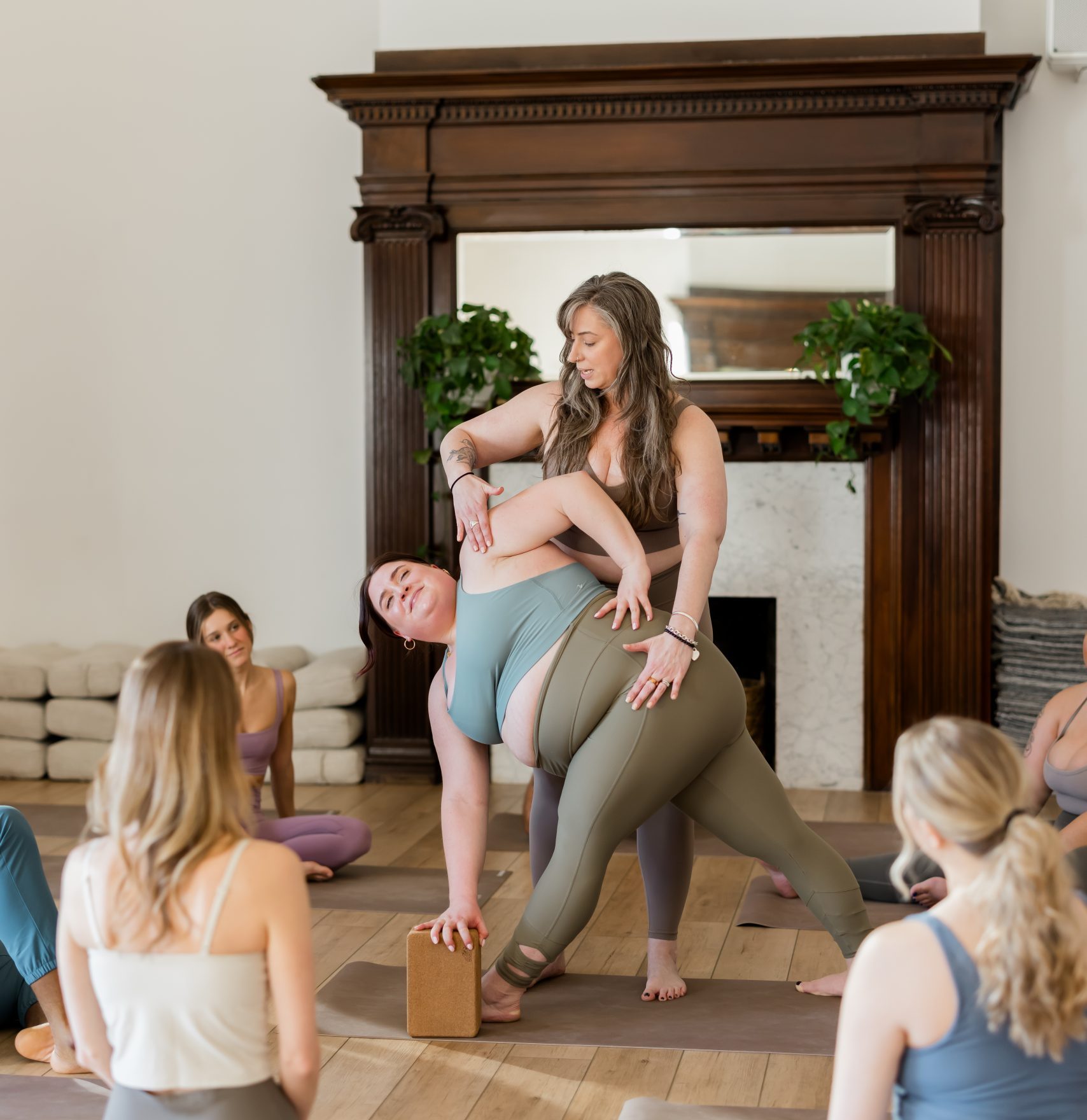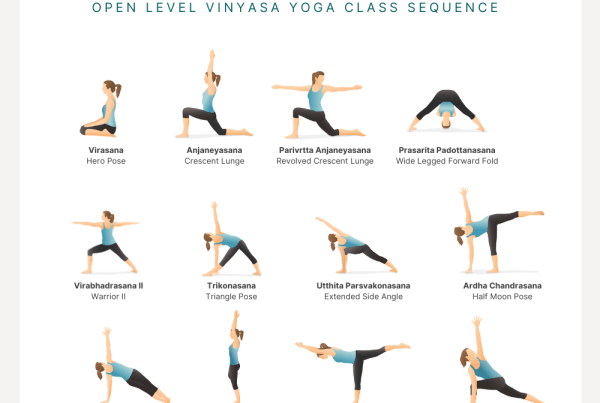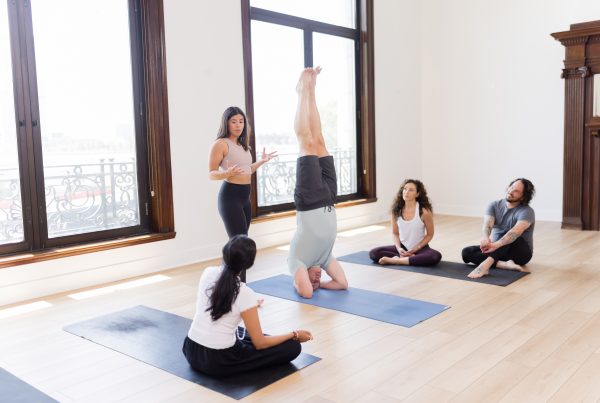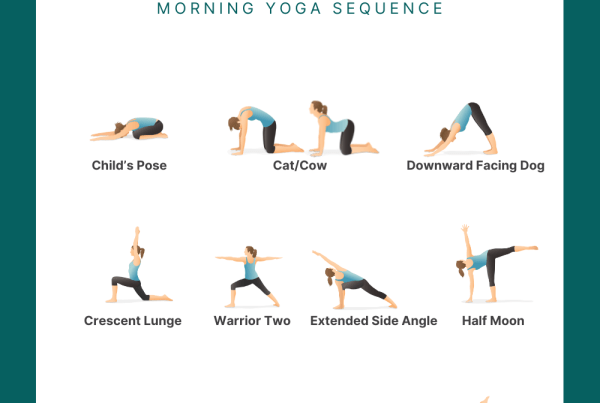
When you first start teaching yoga, it can be overwhelming. There’s so much to remember for a 60 minute timeframe. You’ve got to remember your sequence, queue up the perfect playlist, and create a special vibe that keeps students coming back. No pressure, right?!
There’s a little bit of pressure… so to make it easier on you, we took the most important overarching tips on how to teach the best vinyasa yoga class, every single time. Here are the 3 tips we found most helpful!
1. Teach to the Room/Be in the Present
You may have crafted the perfect sequence and written it down in your notebook. You’ve probably practiced and practiced and re-practiced a thousand times over. But guess what? There’s still going to be people in class that end up going rogue, who might struggle a little bit, or there may be a different number of people showing up than you had envisioned… and this shifts the expectations and your preparedness for the class. Just like life, a yoga class can be unpredictable. Things you have written down in your notebook for which postures you’d like to incorporate and even certain cues you want to use can turn out to be utterly unhelpful. This is why we believe it’s important to stay present and teach to the people that show up in that exact moment. This can mean deviating from your original notes and recalling upon your yoga knowledge enough to know what to say during a class as you read the room! Teaching in the present moment and picking up on students’ specific needs in real time ensures a positive experience for everyone, yourself included.
We’re not saying to ditch your sequence completely, but rather don’t adhere so strictly to the script. The ability to teach in the present moment will improve your cueing, and your confidence and ability to command a room will also increase. The more you rely on yourself to recall specific cues and teaching knowledge will help you become a better teacher overall. Plus, students will appreciate you being present in the room with them, calling on specific needs and adjustments tailored to the experience of the class as a whole. They won’t feel like you just jotted down a sequence, memorized it, and came to teach that day.
Tricks to remember your sequence:
- Have a general focus for your warm-up portion of class that’s related to the peak pose you’re teaching
- Keep your standing round simple: Warrior II, extended side angle, and triangle are a few common, fundamental poses that most everyone can understand how to do
- Keep your cues simple & concise *See tip #2 below
2. Keep it Simple
You get 60 minutes typically in a vinyasa yoga class. How do you make the most of that time when you’ve got to fit in all the poses needed to warm the body up, get it flowing, and have enough time to wind down and hit a full Savasana? You keep it simple. You find cues that work and stick with them. We’ll give you some examples of some of our favorites when it comes to keeping it concise…
- “Step your foot between your hands, spin your back foot down, rise up to open your arms in a T-shape, warrior II.”
- “Let your pelvis and legs stay rooted to the mat as you press through your palms to lift your chest off the mat, cobra pose.”
- “Tuck your toes, send your hips up & back, downward facing dog.”
- “Inhale, lengthen, exhale, twist.”
These are specific examples, but if you can find a way to say the cue in the least amount of words, you’ll make the most of your time. Telling students what to do with their hands and feet is generally a good rule of thumb. For most postures and movements, the hands and the feet are the foundation. Your students will most likely figure it out even if you didn’t describe it in great detail.
You also don’t need to consistently be talking; let students find solitude and stillness to feel things in their own body. The moments of silence in a yoga class are crucial to letting students drop in and find flow. The more you can learn to discern between silence and speaking, the simpler your classes will be and the more students will feel empowered in their own bodies and will want to come back.
Another component of keeping your class simple is by adhering to a framework for what you’d like to teach. At YogaRenew, we always teach to a peak pose to ensure the student gets a well-rounded experience. Working towards a specific shape can be a great way to build familiarity and consistency. If a student knows what to expect in a class, they’ll most likely feel more comfortable returning. Consistency is key!

“Let your pelvis and legs stay rooted to the mat as you press through your palms to lift your chest off the mat, cobra pose.”
3. Have Fun & Be Yourself
In a vinyasa yoga class, there is tons of room for play and movement. You can curate a specific vibe with a vinyasa yoga class that is dependent on the music, the energetic flow of the class, but also your vibe! Enter class with your full authenticity – it’s how your people will find you, and once your people find you, your classes will build. There is no secret to this; show up as you are with what you’d like to bring to the essence of your classes. The whole point of there being a myriad of yoga teachers in the world is that there is a specific and unique vibe for just about everyone. Finding what you enjoy in a class is usually the first step. You might like upbeat music, challenging poses, a faster-paced class with dynamic movement and creative flow and that typically translates to what you like to teach.
Whatever you do, don’t try to be something you’re not. If yoga philosophy and the Yoga Sutras are not your jam, don’t try to quote the texts at the start of class trying to haphazardly link it to your flow you’ve prepared. The class has to come from the heart, and while the ancient texts are important, they are not necessarily the “vibe” for every single yoga class. Open your class with honesty, truthfulness, and authenticity and then carry that with you throughout the class. Your students will pick up on your authenticity and have fun! There’s a small chance that someone in the room isn’t a fan of your teaching style and that’s okay, too… not every teacher and every class is for every person. Preference makes the world go round! Is that what they say?
Go teach a vinyasa yoga class! But first, get certified.
At YogaRenew, we offer a variety of online yoga certification programs designed to fit your lifestyle and schedule. We also created the YogaRenew app with the yogi in mind so you can have access to exceptional yoga, any time, any place. Download it today or enroll in one of our courses and start learning!







